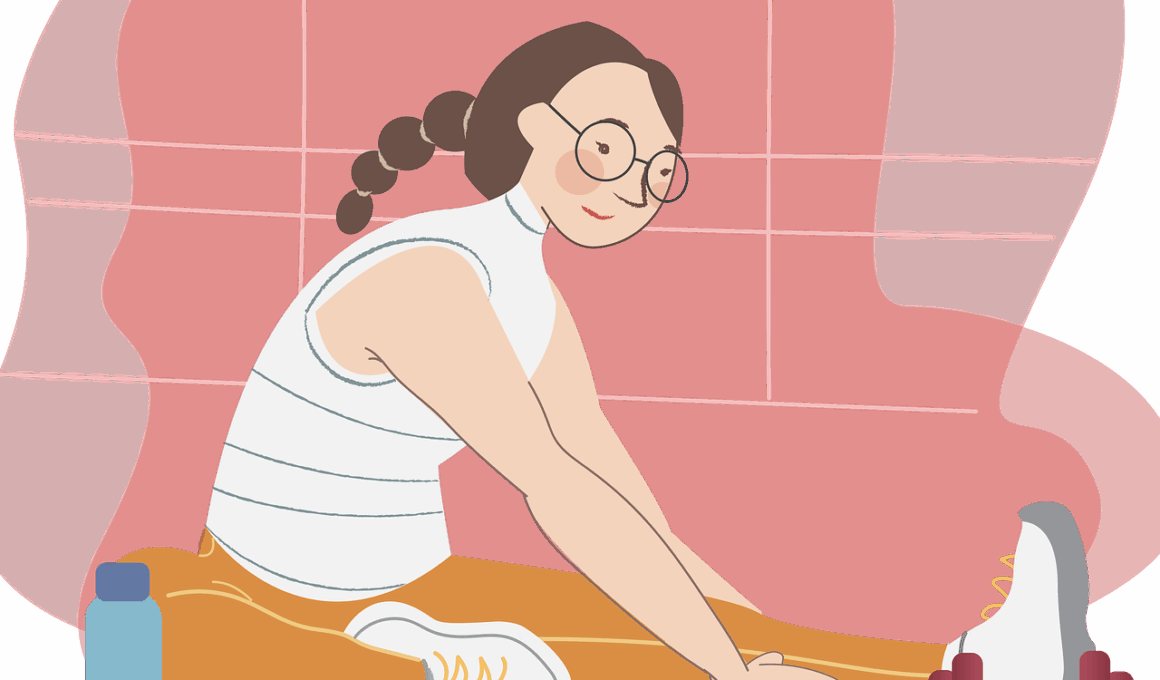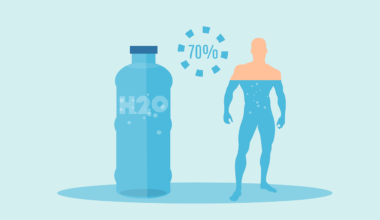The Importance of Warm-Up and Cool-Down in Dance Fitness
Engaging in dance fitness involves not only regular practice but also an understanding of key principles such as warm-ups and cool-downs. These components are vital for enhancing performance and preventing injuries. A warm-up should effectively increase blood circulation, elevate body temperature, and prepare the muscles for physical activity. Typical exercises include light aerobic movements and specific stretches that target areas utilized in dancing. Enhancing flexibility through gradual stretches can significantly improve dance performance, enabling better range of motion. Proper warm-up routines can facilitate concentration and mental preparedness for choreography. Similarly, cool-downs are equally essential to conclude a dance session. They support recovery by gradually lowering heart rates and relaxing tense muscles. This process can also help in preventing stiffness and soreness post-workout. Stretching during cool-downs helps maintain flexibility and reduces the risk of injuries. Consistent integration of both warm-up and cool-down practices creates discipline, enhancing overall dance fitness experience. Instructors should emphasize these components regularly while teaching, ensuring all participants understand their significance. Furthermore, it is encouraged to listen to one’s body to adapt these sessions for personal and diverse group needs.
Benefits of Warm-Up Exercises
Warm-up exercises come with a plethora of benefits specifically tailored for a dance fitness regimen. Firstly, they increase the heart rate and blood flow, which consequently boosts oxygen delivery to muscles. This allows for improved performance during dance routines, enabling dancers to execute movements with greater strength and agility. Secondly, warm-ups enhance flexibility, which is imperative for various dance styles. Flexibility helps dancers achieve graceful movements and avoids any sudden straining or injuries during intense activities. Warm-ups also play a crucial role in improving coordination and balance, essential qualities for any dancer. Through specific drills, dancers can enhance their body awareness, leading to better execution of choreography. Additionally, dedicating time to warm-ups helps establish a mental focus, allowing the dancer to visualize their performance effectively. With the right mindset and physiological readiness, dancers can explore their expressive potential more freely. Lastly, warming up encourages social interaction among participants, fostering a sense of community. Group warm-ups can increase motivation and create a fun atmosphere conducive to learning. By integrating warm-up practices, dancers will undoubtedly experience enhanced performance and reduced injury risks throughout their training.
While warm-ups are essential, post-dance cool-downs provide a necessary counterbalance to intense physical activity. Performing a cool-down routine serves to bring the heart rate back to its resting level gradually. Sudden cessation of activity without cooldown can lead to dizziness or fainting, making it vital for participants to engage in this practice. Cool-downs also usher in relaxation, both physically and mentally, helping dancers unwind from the demanding nature of fitness routines. Additionally, this phase promotes flexibility through continued stretching, preventing muscle shortening that commonly occurs post-exercise. By alleviating muscle tension, cool-downs help students maintain optimal performance levels for future sessions. They reduce soreness in muscles by enhancing circulation and promoting the removal of metabolic waste products that accumulate during intense exercise. With proper cool-downs, dancers will be less prone to injuries and will recover faster. Incorporating breathing exercises during this phase can further enhance overall relaxation. Utilizing soft music during cooldown stretches creates a calming environment, encouraging participants to reflect and appreciate their efforts. For a well-rounded dance fitness routine, instructors should prioritize these warm-ups and cool-downs, allowing dancers to fully experience the physical, mental, and emotional benefits.
Key Components of Effective Warm-Up Routines
To create an effective warm-up routine, it’s essential to include several key components that cater to various aspects of dance fitness. Start with general aerobic activities such as marching in place or light jogging, lasting around five to ten minutes. This initial preparation phase should gradually elevate the heart rate and warm the core body temperature. Following this, incorporate dynamic stretches that mimic the movements performed in dance classes. Dynamic stretches involve active movements where muscles and joints are taken through their full range of motion. Examples include leg swings and arm circles. In addition, integrate specific dance movements at a slower pace, allowing participants to familiarize themselves with techniques while getting accustomed to rhythm. Furthermore, focusing on muscle groups targeted during the dance is crucial for enhancing flexibility. A variety of stretches should be employed, especially targeting lower back, hip flexors, hamstrings, and calves. Breath control is another vital aspect of warm-ups, allowing participants to synchronize their movements with breathing patterns. Lastly, instructors should encourage mental preparation through reflection or visualization techniques, enhancing dancers’ awareness before they start their energetic routines.
Incorporating a variety of techniques ensures participants stay engaged during warm-ups. A common approach involves transitioning between different types of movements that progressively increase in intensity. Start at a gentle pace, allowing time for participants to build their energy and immerse themselves in their warm-up experience. Avoid repetitiveness: regularly changing up warm-up exercises sustains interest, preventing monotony while promoting enhanced benefits. Creativity plays a significant role; instructors can cycle through styles or include partner-based exercises fostering team dynamics. Moreover, set intentions for each session, encouraging personal goals and reflections on intentions. Emphasizing the importance of focusing on both physical and mental aspects heightens overall mindfulness during warm-ups. This can enhance the sense of community and connection fostered among participants. Affirmative language during warm-ups can also encourage participants to feel accomplished and strengthen their fitness mindset. Developing a sense of playfulness through music and rhythm can further enrich the experience. With variety, intentionality, and creativity, warm-up sessions lay a strong foundation for a productive dance fitness experience, ensuring dancers feel exhilarated and inspired throughout their practice.
Strategies for Successful Cool-Down Practices
Implementing effective cool-down strategies is crucial for optimizing recovery post-dance fitness routines. The cool-down phase should begin with reducing the intensity of movements slowly, transitioning into gentle stretching exercises. Instructors should encourage participants to pay attention to their breathing during stretches and focus on relaxation. This helps facilitate enhanced restoration and creates a calming atmosphere. Engaging in static stretches, where movements are held for longer periods, allows the body to decompress naturally from rigorous sessions. Participants should stretch major muscle groups utilized in workouts, thereby preventing any stiffness or soreness. Additionally, instructors can foster peer support by incorporating partner stretching activities, making this phase enjoyable and interactive. Providing guidelines on hydration also plays a significant role, as participants need to replenish fluids lost during exercise. Incorporate relaxation techniques such as deep breathing or mindful meditation to further transition students from an active state to one of calm. Using soft music during cooldown activities can help set the mood, allowing for a smooth progression towards a relaxed state. Ultimately, prioritizing effective cool-down practices ensures that participants leave feeling rejuvenated, empowered, and prepared for their next dance fitness endeavor.
In conclusion, prioritizing warm-up and cool-down practices in dance fitness is essential for fostering both performance and physical well-being. These components should not be overlooked by dancers of any level, as they directly contribute to minimizing the risk of injuries. Warm-ups prepare the body physically and mentally, allowing for better execution and enjoyment of dance routines. Meanwhile, cool-downs facilitate recovery and relaxation, ensuring that participants remain optimally engaged and physically prepared for the next session. Emphasizing the importance of proper warm-up and cool-down exercises nurtures a culture of awareness and mindfulness among dancers, promoting overall effectiveness in their practice. Instructors are encouraged to integrate these routines consistently, educating participants about their fundamental role in enhancing the dance fitness experience. By cultivating habits of warm-ups and cool-downs, one can explore an enriched and fulfilling engagement with dance. As dance fitness evolves, these foundational practices will continue to play a pivotal role in shaping performance and well-being. Every dancer deserves the benefits that arise from respecting their body through appropriate warm-up and cool-down techniques, enabling them to express their creativity fully.


